Ever wanted to change a bush into a bonsai tree? This post is for you.
Way back in August, 20107 I introduced this tree from my bonsai collection for the first time here on steemit. I wrote about it in this post titled: Emerald Queen, Saphire Sorceress, and a romantic gesture from Aphrodite.
Back then, this was the third post I had made since joining the blockchain. It had 6 votes, valued at $1.32, including my own tiny vote. The only comment I received was from @steemitboard, a bot. I had a reputation of 25 back then, and only $25 steem delegated to me. I kept plugging away and making posts about bonsai trees, and eventually I grew stronger.
I've come a long way since then, and made a lot of nice friends along the way.
They say that bonsai trees are good luck. It's always been my wish that I might own a bonsai tree that might help me to increase my fortunes.
So let's take a fresh look at this tree.
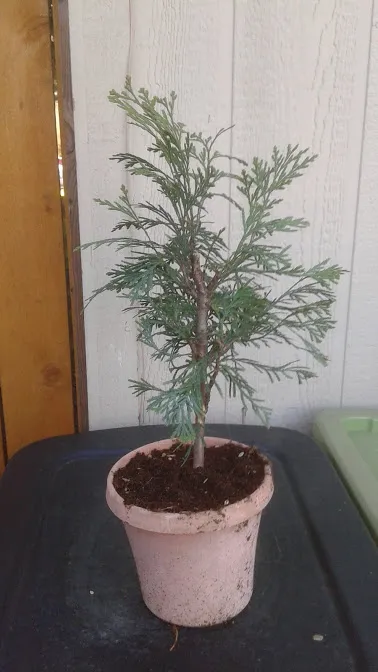
Arborvitae
In this post I'll be covering these main points:
- How the tree grows
- Inspiration from Nature
- Strategy for Clean-up and Pruning
- End Results
- Bonus Photos
How the tree grows
New growth is beginning to show on this tree, although you cannot see the color very well in this photo. The tips of the needles on the outside of the tree turn light green in the areas where new growth can be expected.
This type of tree will backbud along branches and the trunk as long as it receives sunlight. As it becomes bushier, only the tips of the needles gain sunlight, and so only the tips will form new buds and needles.
Sometimes the needles fork out in alternating directions, and the central stem becomes a true branch over time.
Needles on this tree are scale shaped, and have soft rounded edges.
The bark is somewhat strong and smooth like leather, and the interior wood is very flexible even when it is very thick. A heavy wind wouldn't bother this tree at all, because it flexes back to perfect posture so easily.
Inspiration from Nature
This past Sunday I took a nature walk, and managed to take dozens of photos in the park. There were many old growth trees. When I looked up at the types of conifers growing here, I noticed one type of tree was extremely plentiful, and resembled the characteristics of my common Arborvitae. To me, the Western Red Cedar looked like the type of tree I wanted to model my tree after.
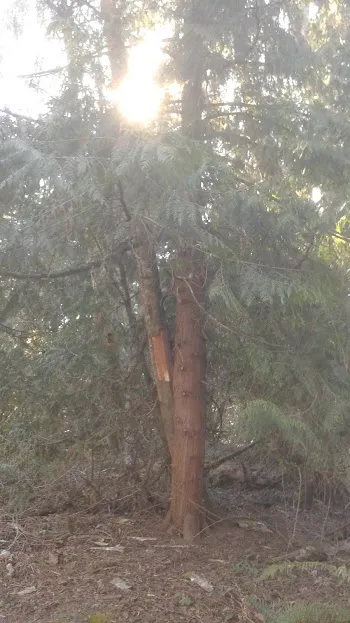
On a mature tree, the weight of the lush needles cause the branches to curve downward, and upward at the ends where the weight is the least heavy. The shape of the needles drape down on both sides of the branch like a blanket, and they taper in from wide to narrow at they grow towards tip of the branch.
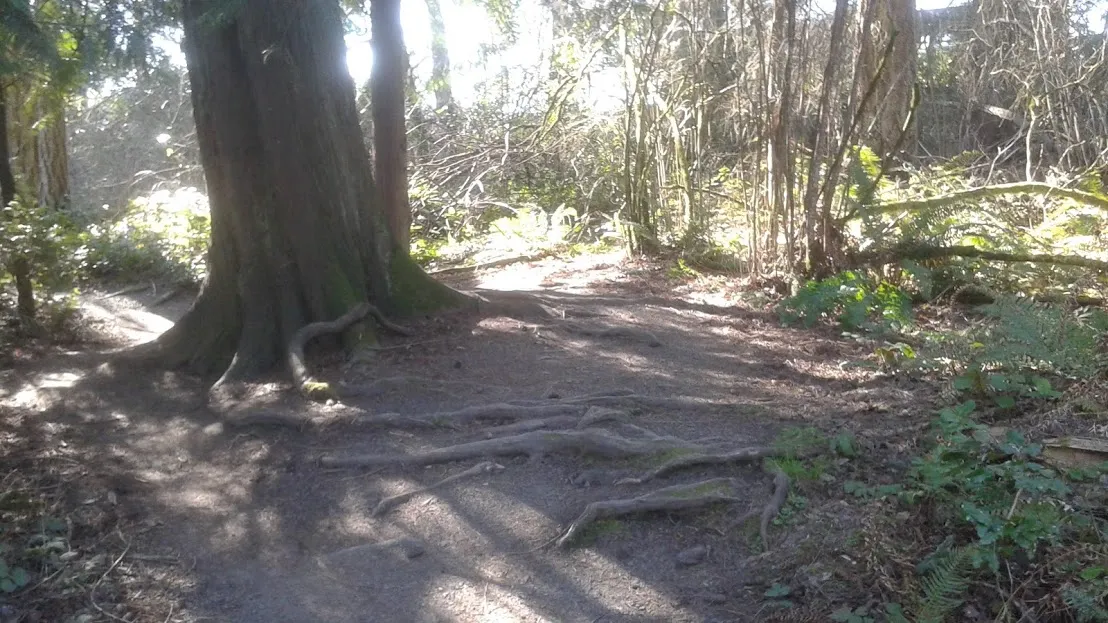
Here you can see the base of the tree widens into the soil surface, and the roots that were once underground have started to surface. This is because the soil line reduces down over the years as material deep in the ground decomposes, and in some cases the tree presses itself up out of the soil if there are rocks and boulders cramping it for space underground.
Something about Cedars that always fascinates me is that nothing seems to grow on the soil under the branches. It releases an acidic scented chemical that prevents mold, insect infestations, and growth of weeds. Yet the soil is often very earthy and rich in organic material.
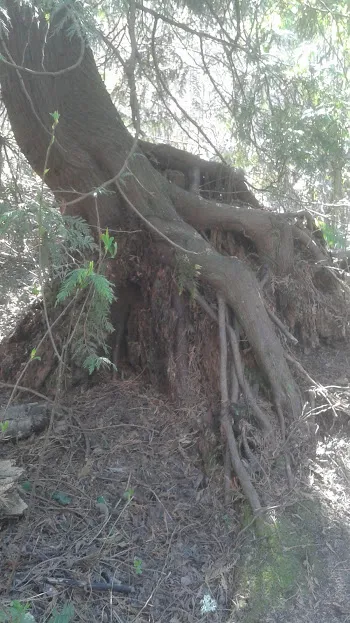
Even after a landslide that unearths the tree roots, it adapts. The flexible wood allows the tree trunk to grow towards the sun from any angle it needs to.
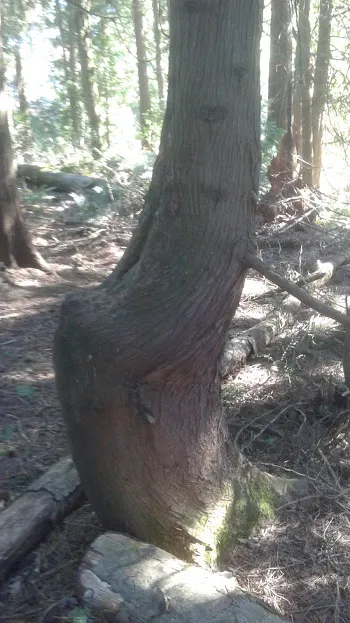
The trunk can be a sculptural art.
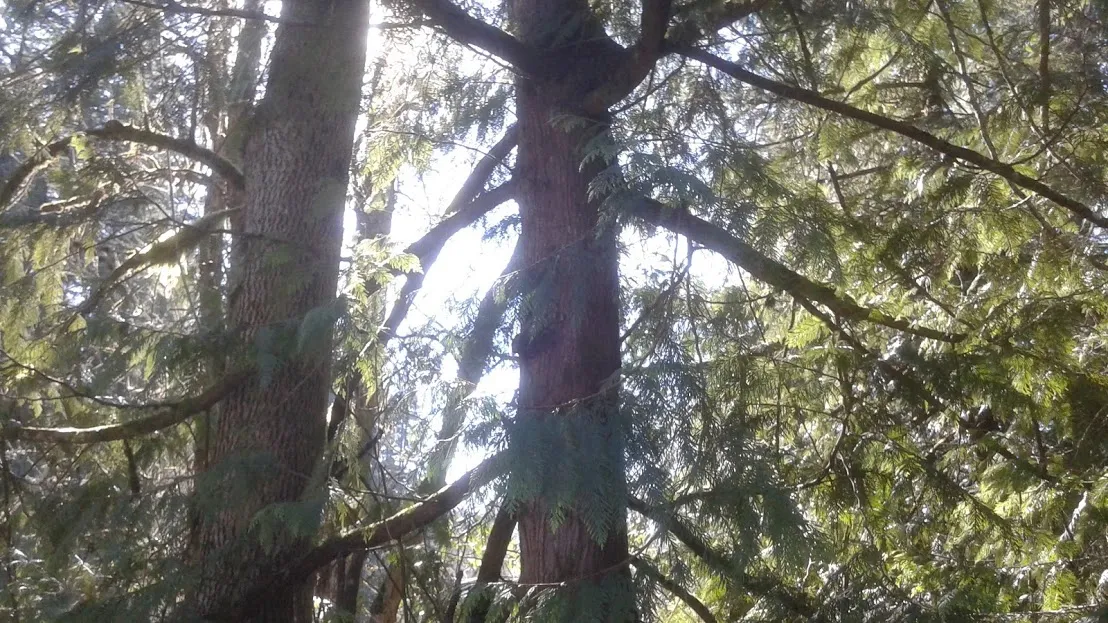
Thick growth looks wonderful on these trees when they are supported by many strong outward angled branches.

Cedars are strange trees. They will grow in soil that looks completely dead of life. They will even grow from a fallen timber. Here you can see the cut log was not yet dead, because the old branch survived and became a new trunk. Somehow it managed to grow new roots so it could survive.
Strategy for Clean-up and Pruning
My Arborvitae tree was originally just a little tuft of needles barely spreading out into a few thin branches. While I did foster a few dominant branches to thicken up, by removing nearby branches, I have done very little pruning over the 4 or 5 years that I've owned it. My goal was to let it thicken up, to let it fill out more fully to a width that I thought was appropriate for the desired tree height I wanted. Now that the tree is high, wide, and full enough for my preferences, let's go to town on it!
Things to remove first:
- Dead wood, and dead branch ends left over from past pruning.
- Brown needles.
- Weak/small buds growing along the trunk, or between the branch connections.
- Branches too tall or too long, extending beyond the range I want the tree size to be.
Define the branches:
- Remove buds and needles along the length of the branches. I want to see curved branches, not pom-poms.
- Select branches from the trunk to be maintained, and which branches to be removed. Ideally branches are spiraling around the tree evenly, with more space between the branches at the bottom, and branches more close together near the top.
- Remove more needles from the larger bottom branches to make the branches appear longer.
- Eliminate any side branches that fork into the direction of other branches, or back toward the trunk.
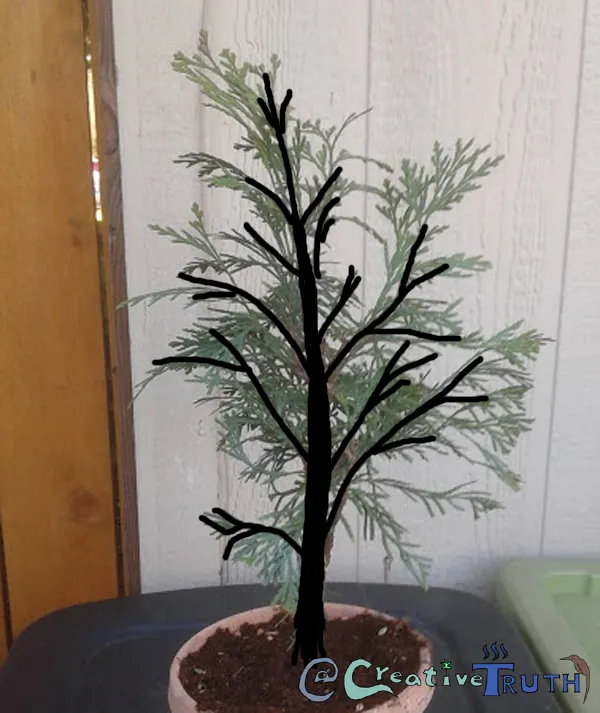
My tree has a thick cluster of many spreading needles competing for space and sunlight in the middle of the tree. Those needles are also taking vigor away from the other nearby branches, because these needles are trying to absorb sunlight so they can become strong branches too. For the design I want, those areas will be opened up so you can only see a few dominant branches in that middle space, and not a mess of needles blocking the trunk.
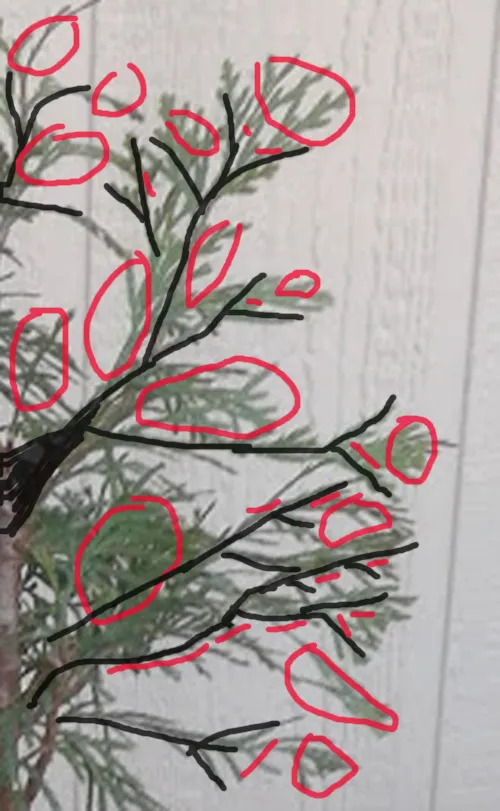
Detailing the needles:
- Change the look of spreading needle fans into separated branch fingers, by eliminating redundant needles between other needles. I want needles to define into small branch divisions, and not form a pillow of crowded needles on one fattened branch.
- Reduce the number of the needles on the upper side of the tree, so they are slightly less plentiful than the lower side of the tree. The goal is a conical shaped tree, with most of the needles growing on the oldest low branches, and fewest at the very top.
- Even out the amount of needle growth from branch to branch. Make it look like the correct amount of needles are growing on a branch. Reduce the amount and size of needles on a branch to make it look not too thick compared to the amount of needles on the other branches on the opposite side of the tree.
- Remove anything hanging down into the foliage of other branches. Long needles growing on the underside of branches can go too.
End Results

This looks like a nice front view to me.
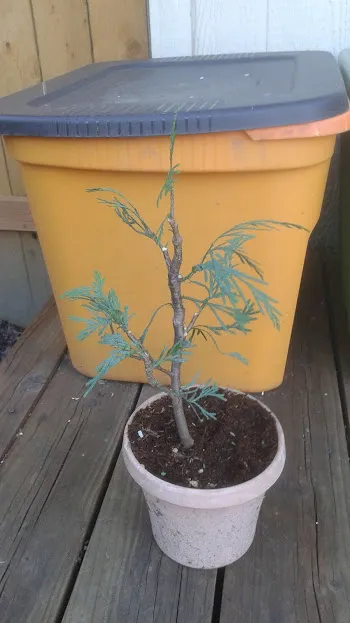
Back view.
It looks a lot like how it looked three years ago. Very thin and straggly once again. At least the branches look more substantial and better balanced around the tree now. It has the basic bones of a tree form, and now it just needs to put on a fresh coat of more green growth.
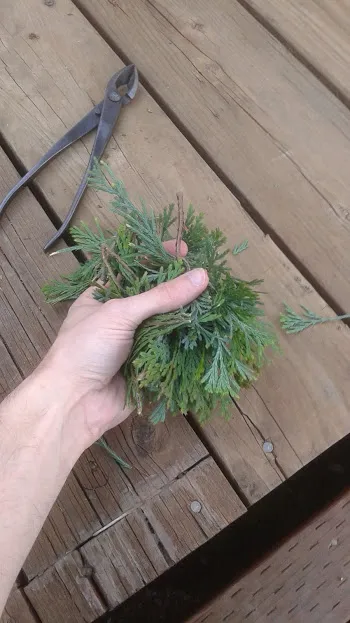
This really reminds me of my last haircut. I told the barber to cut it just as much on the sides as last time, with a little bit shorter on the top. The barber followed my instructions, except he used the electric clippers to shave the hair all the way up to the top crown of my head! I was a bit surprised how much hair he shaved, so we had to take off a lot more hair off the top too to even it out.
What do you think of my tree's new haircut? Was it a lot more than you expected?
Bonus Photos:
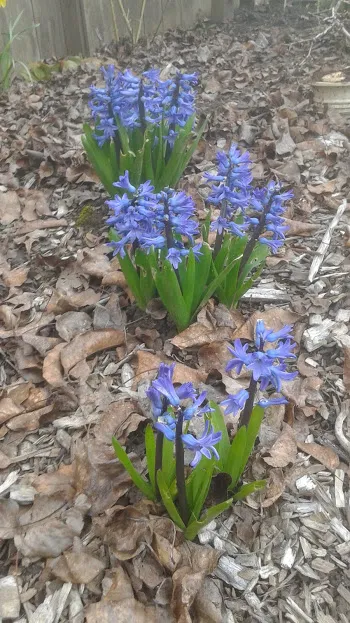
Has anyone figured out yet what my favorite color is?
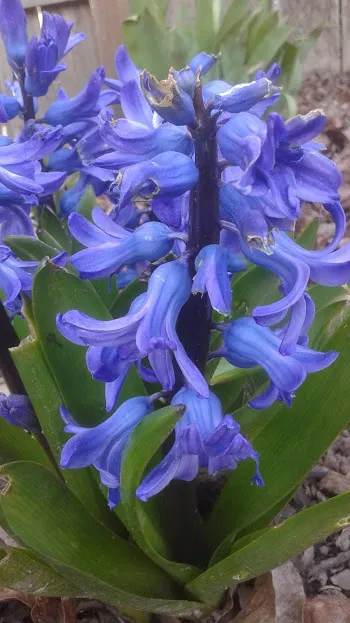
Can you take a hint?
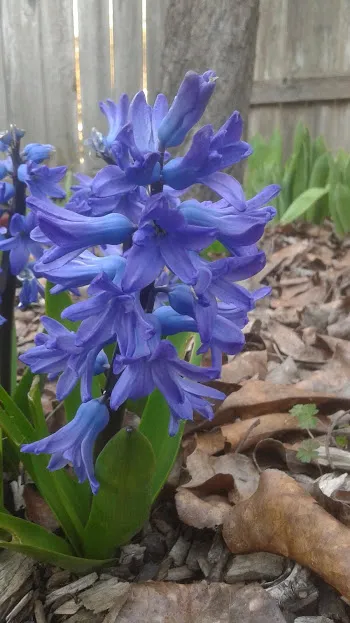
These grow in our yard, and have a truly neon/florescent color.
All photos in this post were 100% original, and taken from my smartphone.
Thank you for checking out my post. I like to upvote my posts after five days to help minnows get a higher percentage of my curation rewards, so please consider supporting my work. I share photos and writing about bonsai, gardening, and sometimes humorous short stories of my own.
Get some sunshine this week, it's good for you.
